Not all beer is meant to be served very cold. Different beer styles are best enjoyed at the temperatures most appropriate for their unique profiles.
Drink Beer in Tasting Mode
The majority of beer drinkers don’t always realize the extent to which temperature plays a crucial role in the expression of a beer’s character and range of flavors.
Most brews cannot reveal their virtues if served too cold – the nuances of hops aroma don’t come forth as they should, yeast esters are suppressed and never unfold… In essence, the drinker cannot smell or taste all the compounds meant to be experienced.
In the US, despite the massive move towards flavorful beer reflected by the growth of the craft beer industry of recent past the importance of beer serving temperature seems to not be fully understood.
Questions such as In what countries do they serve beer at cellar temperature? or Do the English and Scottish really drink their beer warm? are often charged with a great deal of condescension. Ironically, those asking them could benefit from understanding beer making and styles in more depth and hence the reasons for drinking beer at cellar or warm temps.
Ideal Beer Temperature
Beer can be served at temperatures as cold as several degrees above freezing, through cold/cool cellar temperatures to just under room temperature (considered warm). Each style has an optimal range which best highlights its individual attributes and promotes maximum enjoyment.
Overall, excessively cold temperatures mask flavors and enhance a beer’s bitterness, dryness and carbonation. There is little to be gained from chilling a beer to such an extent, unless of course the goal is to hide the fact that it lacks flavor by simultaneously amplifying the tingle of its effervescence (commonly the case with mass market lagers).
Heat and evaporation help release the aromatic compounds within a brew. And because flavor is predominantly influenced by our sense of smell (especially retro-nasal olfaction) a beer tastes much better when its organic volatile compounds are in play. Mouthfeel is influenced by temperature as well.
For example, the prized Saaz hops aromas and malt characteristics of a great German pilsner are considered to best unfold at about 42 F. Yet at this cold temperature the refreshing carbonation of the style still contributes to a crisp drinking experience. Pale lagers are so thirst-quenching.
The richer and heavier on the palate beers become, the more important it is for the full range of their chemical compounds to come through.
TIP: A simple rule of thumb is that light bodied, lower alcohol beers taste better served cold, while full bodied, higher alcohol brews benefit from being served a bit warmer.
Beer Serving Temperature Chart
Organized by style, below are the temperature ranges for serving beer universally recommended in the craft beer industry.
- 34–40°F (1–4°C) VERY COLD.
- Mass produced, flavor-deprived light lagers
- malt liquor
- bottom-shelf beers
- 41–45°F (4–7°C) COLD.
- Czech and German Pilsners, Munich Helles
- wheat beers (such as Hefeweizen, Witbier, Gose, Berliner Weisse)
- Kölsch ale
- American craft lagers
- 45–50°F (7–10°C) COOL.
- IPAs, American pale ales, porters, and most stouts
- Munich or Franconian dunkel lagers, amber lagers (Märzen or Vienna)
- 50–55°F (10–13°C) CELLAR TEMPERATURE.
- Most Belgian ales, including saisons, sour ales
- German bock and maibock lagers
- English bitter, English mild, Scottish ales
- Baltic porter
- 55–60°F (13–16°C) WARM.
- Strong, rich ales such as barley wine, double IPA, imperial stout, Belgian strong ales, dubbels, quadrupels
- Strong lagers such as German doppelbock and of course, eisbock
Important Considerations
Beer warms up quickly once poured. The following few points are worth keeping in mind:
- poured beer looses carbonation quickly – this is the main reason for light body mass market lagers to be served ice-cold. The low temperatures amplify the landmark tingling sensation of carbonation. As the cold beer warms and flattens, the apparent lack of flavor can no longer be overcome by the virtues of effervescence.
- no to the ‘frosted mug’ – freezing glassware to keep a beer cold longer usually leads to the glassware picking up undesirable odors from the freezer which has a negative impact on the drinking experience. Additionally, the ice crystals formed on the surface of the glass interfere with proper foam formation when the beer is poured.
- capacity of the glass – if pouring an easy drinking beer, meant to be enjoyed cold such as a Munich helles or an American craft lager, a massive German style glass (mass) will work, as long as you plan on consuming the beer pretty fast. For a more paced consumption a half liter/pint glass is preferable because the beer will not get too warm over the time it takes to drink it.
- try to serve just a bit colder than the optimal temperature for the style – to offset the inevitable warming due to the hands and glass contact.
- easily bring a beer up to temperature – if served an overly cold imperial stout for example, simply hold the glass between your hands for a short while and swirl it gently to help it reach the desired temperature.
- serve strong beer in appropriate stemmed, smaller glassware – not only because the beers meant to be served in the warm temperature range are particularly high in alcohol, but also because they can easily get too warm if held and sipped on for awhile.
You Might Also Like
The Difference Between Flavor and Taste
The Rare Beer Club Subscription
Pilsner vs Lager
Porter vs Stout
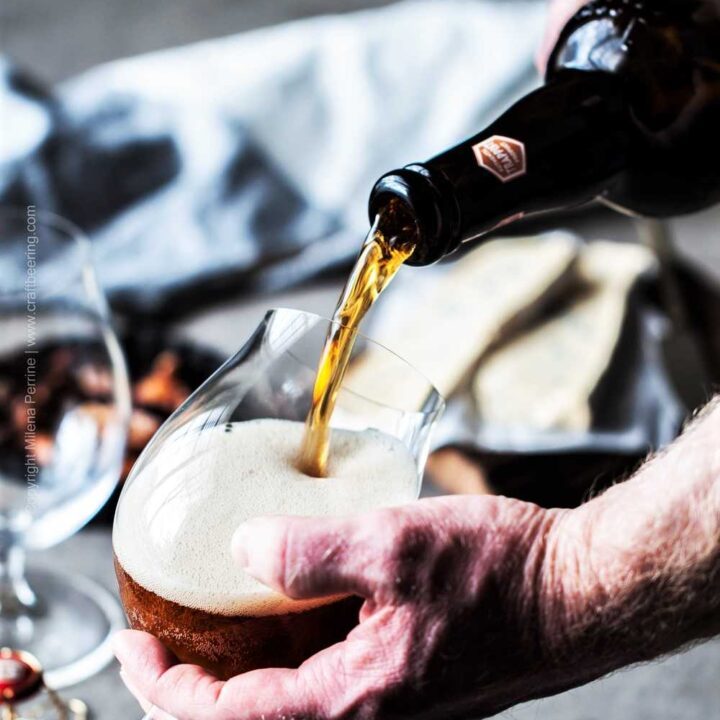
Beer Serving Temperature
Instructions
Temperature ranges for serving beer universally recommended in the craft beer industry.
Notes
VERY COLD 34–40°F (1–4°C)
Mass produced, flavor-deprived light lagers
malt liquor
bottom-shelf beers
COLD 41–45°F (4–7°C)
Czech and German Pilsners, Munich Helles
wheat beers (such as Hefeweizen, Witbier, Gose, Berliner Weisse)
Kölsch ale
American craft lagers
COOL 45–50°F (7–10°C)
IPAs, American pale ales, porters, and most stouts
Munich or Franconian dunkel lagers, amber lagers (Märzen or Vienna)
CELLAR TEMPERATURE 50–55°F (10–13°C)
Most Belgian ales, including saisons, sour ales
German bock and maibock lagers
English bitter, English mild, Scottish ales
Baltic porter
WARM 55–60°F (13–16°C)
Strong, rich ales such as barley wine, double IPA, imperial stout, Belgian strong
Strong lagers such as German doppelbock and eisbock

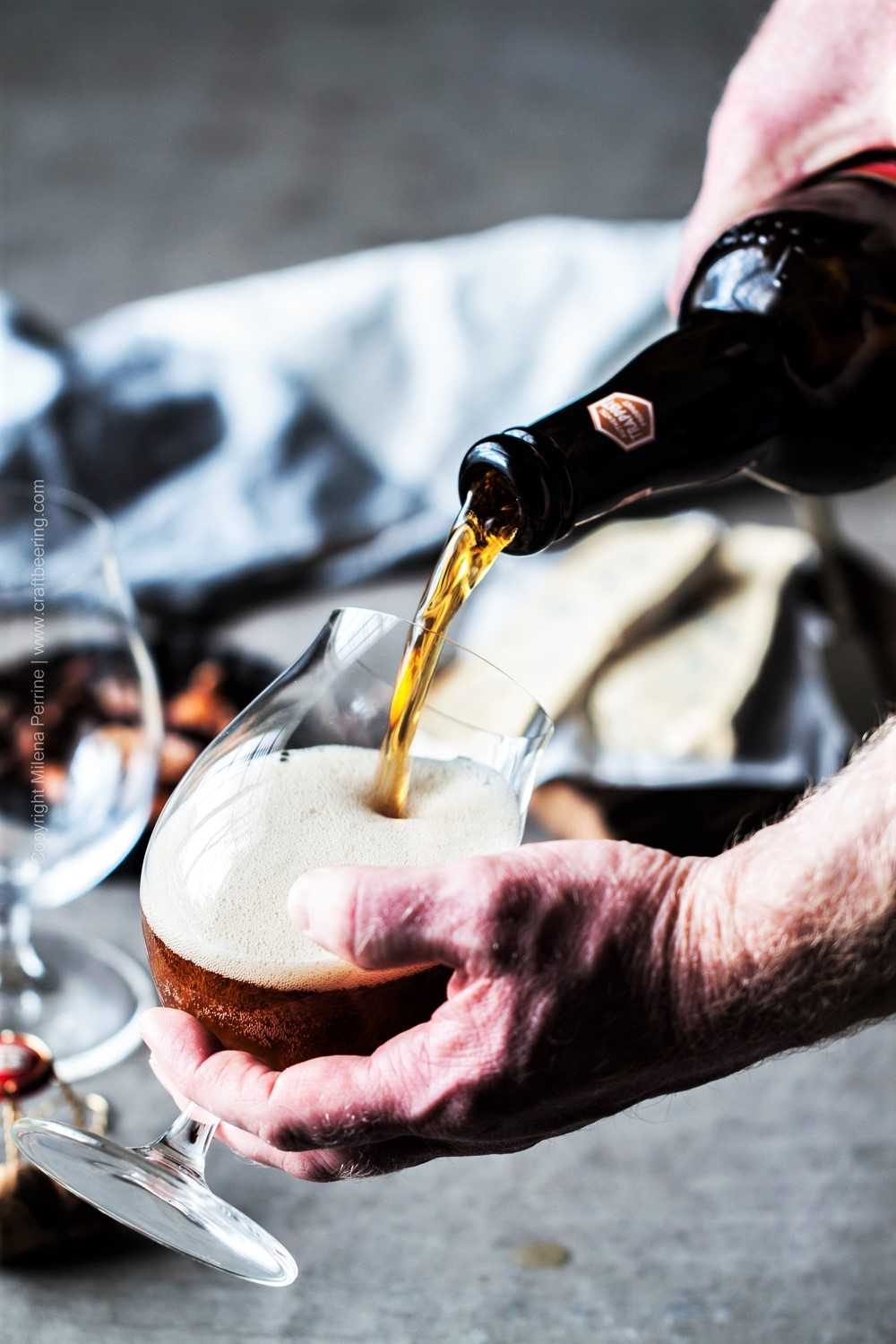
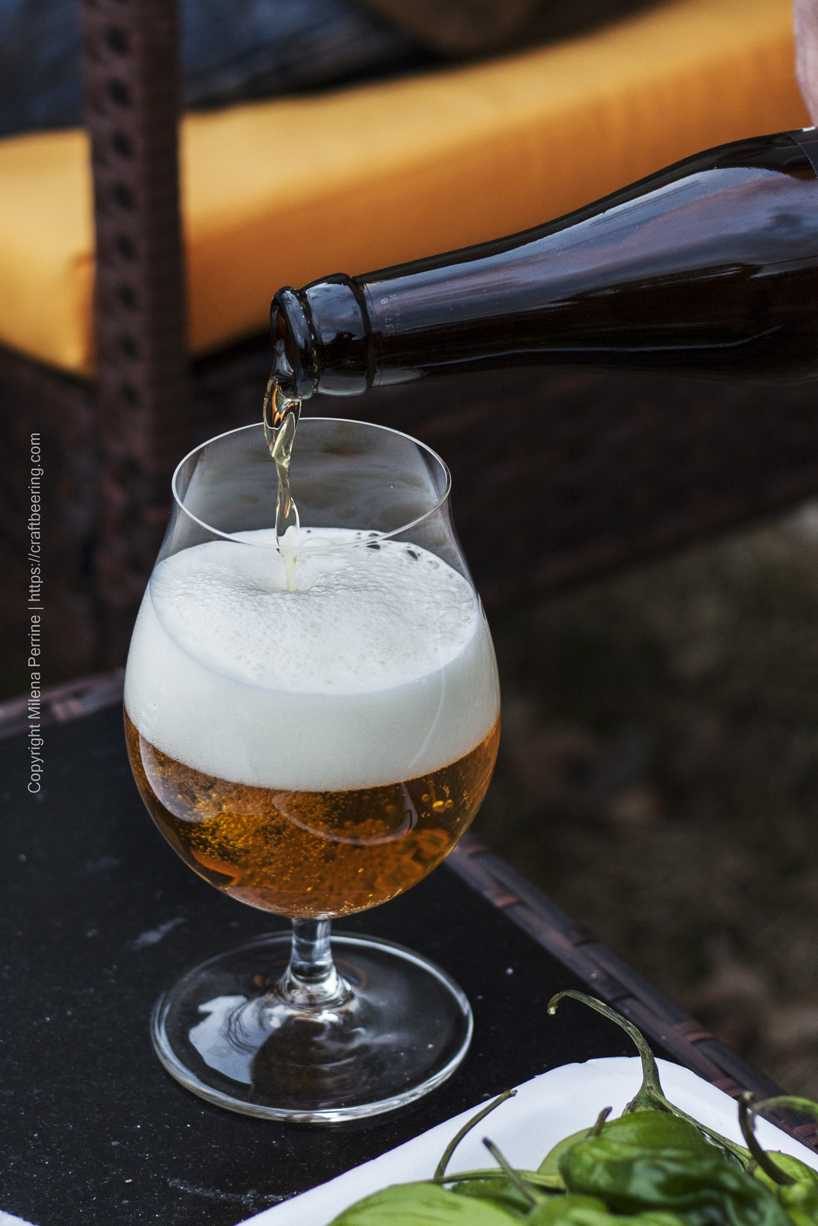
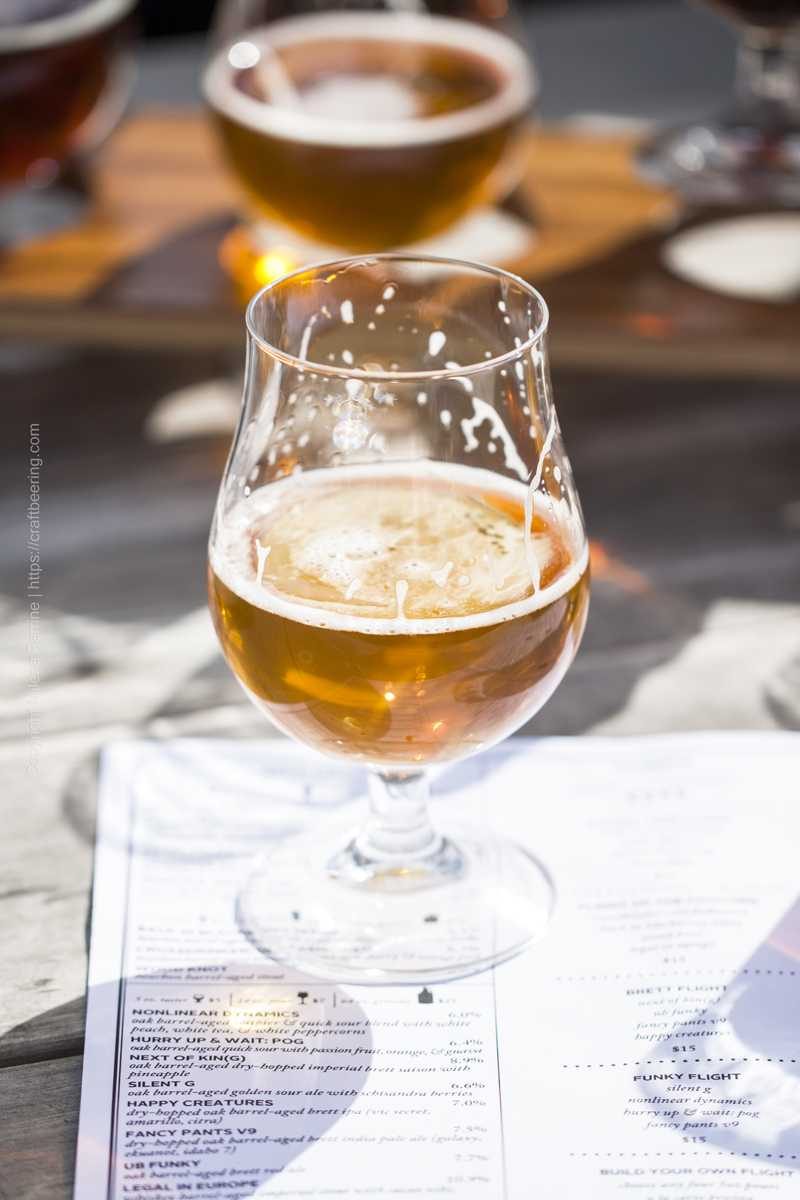
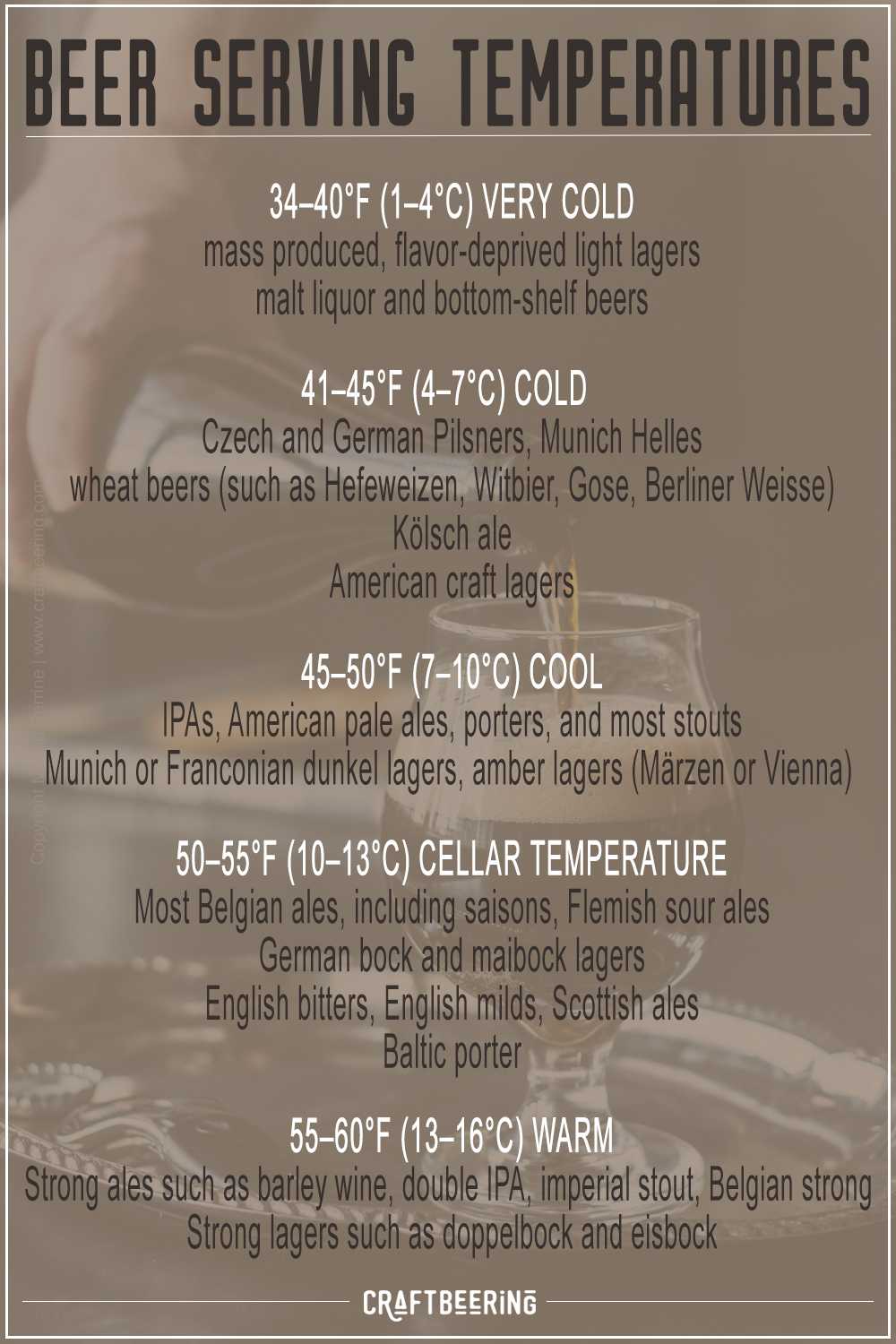
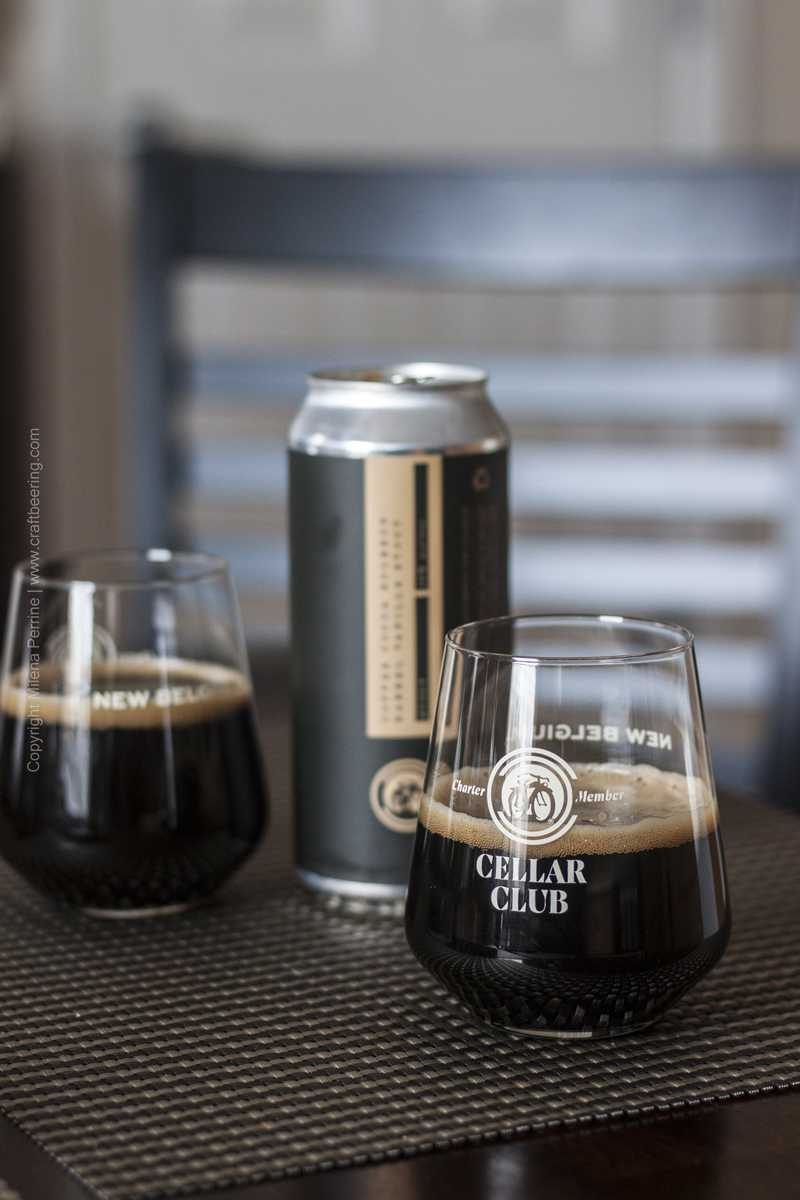
Leave a Reply